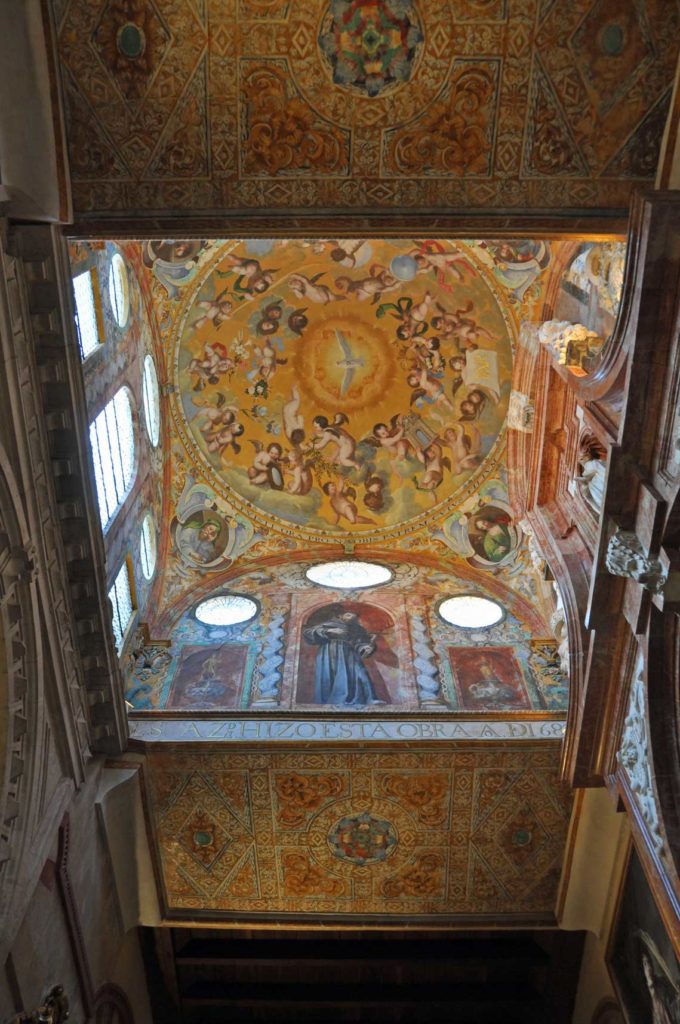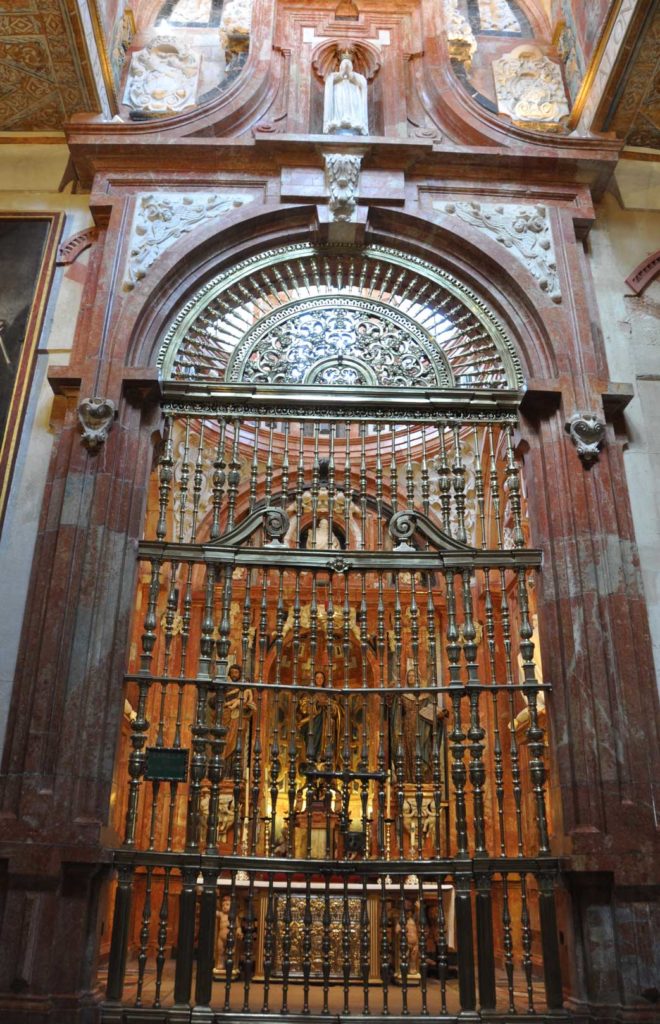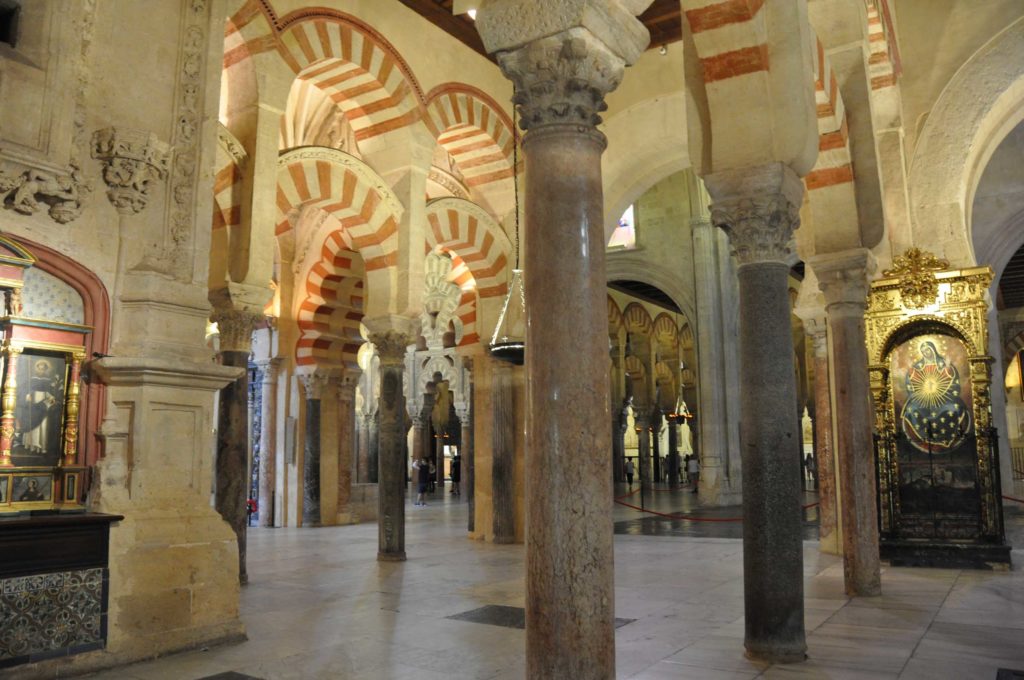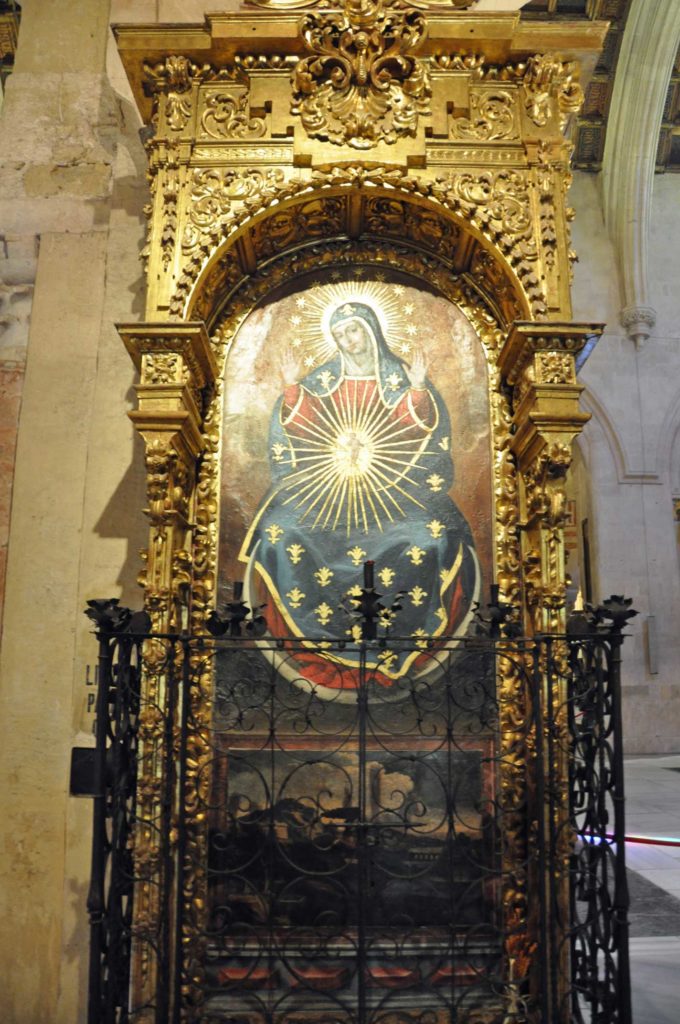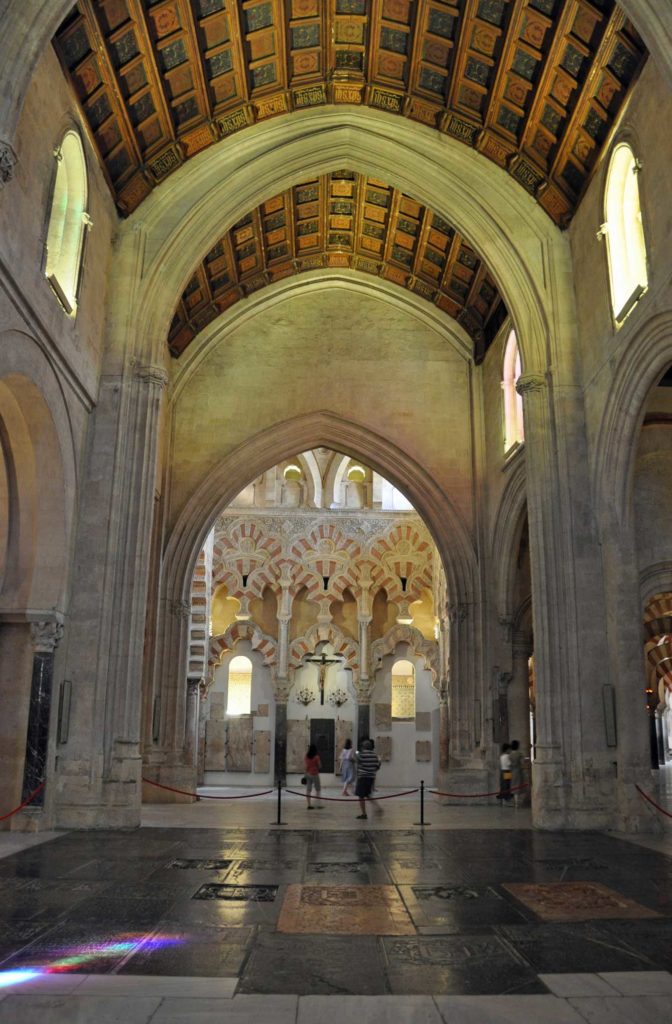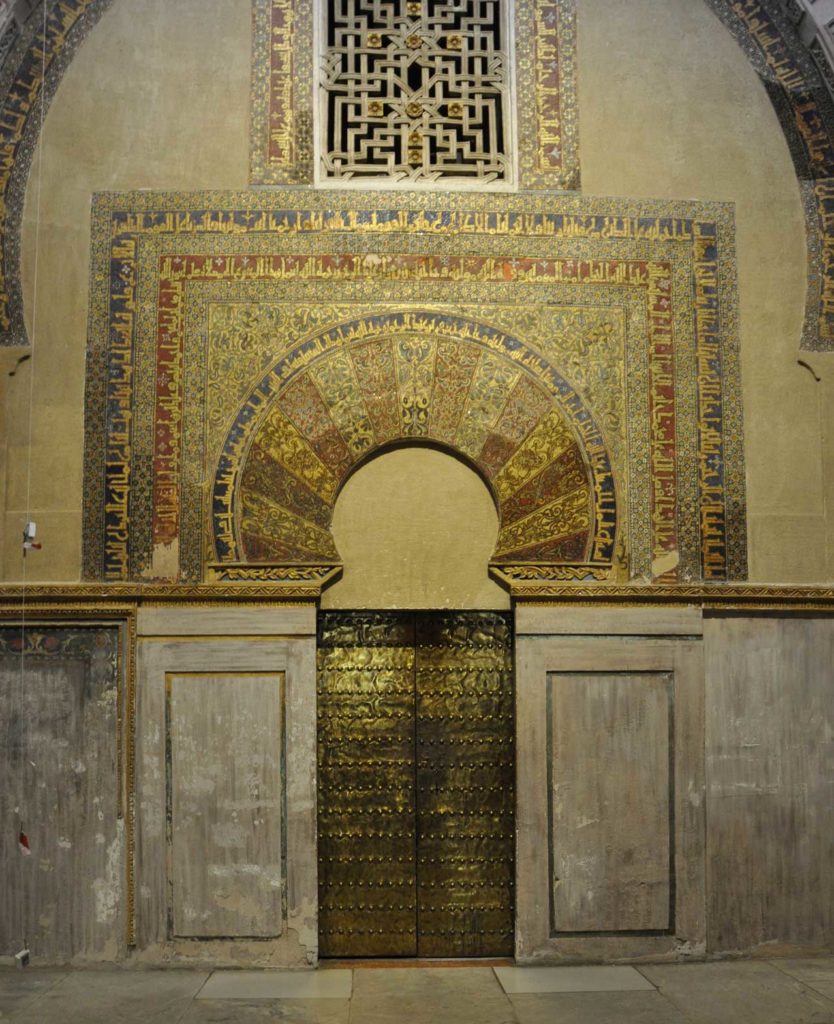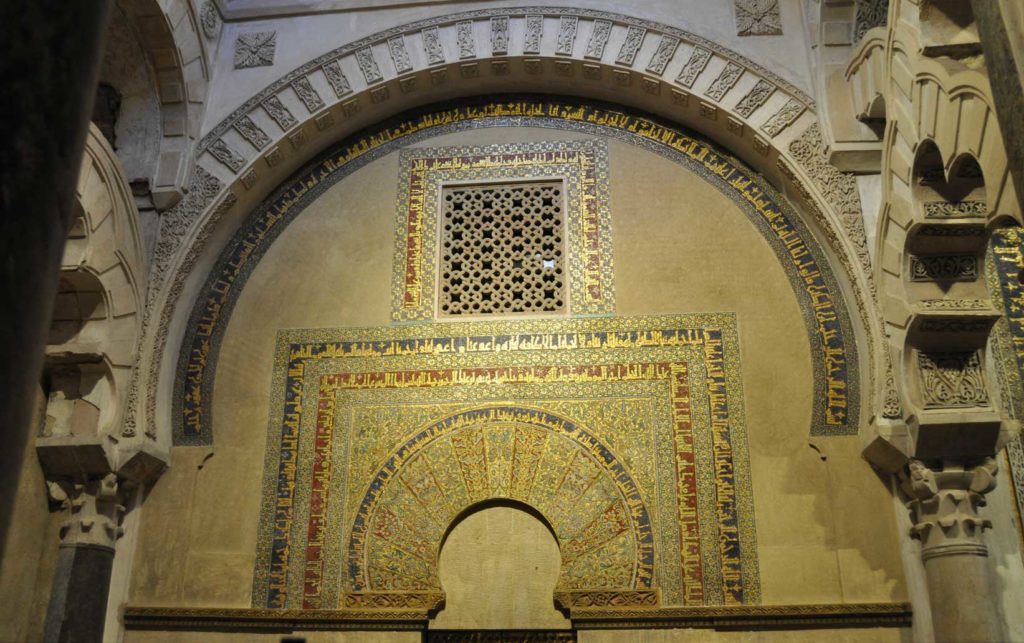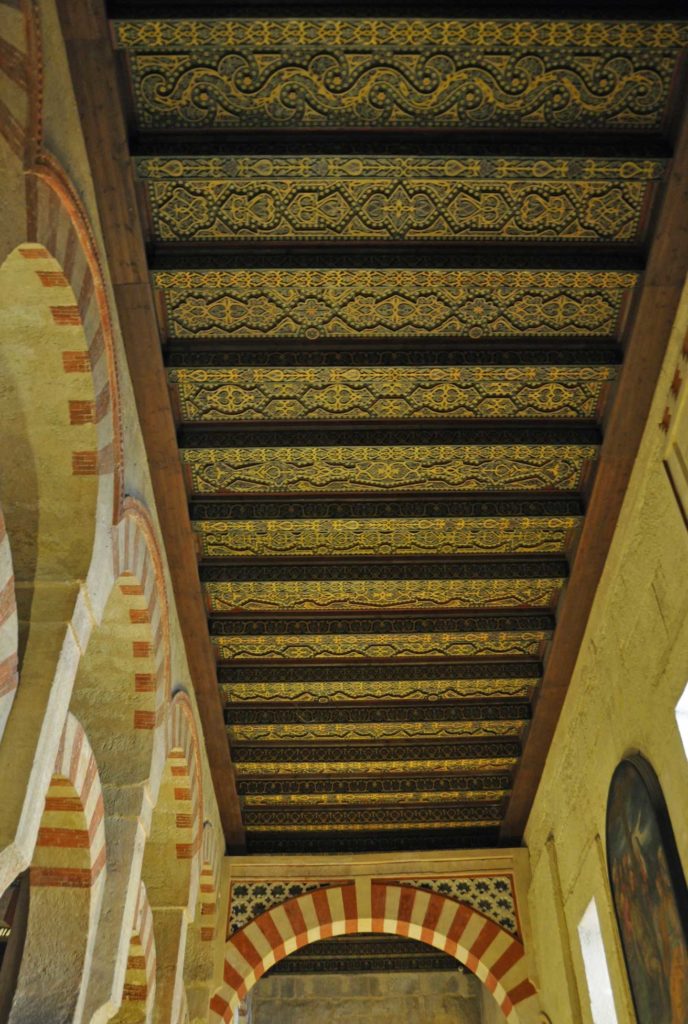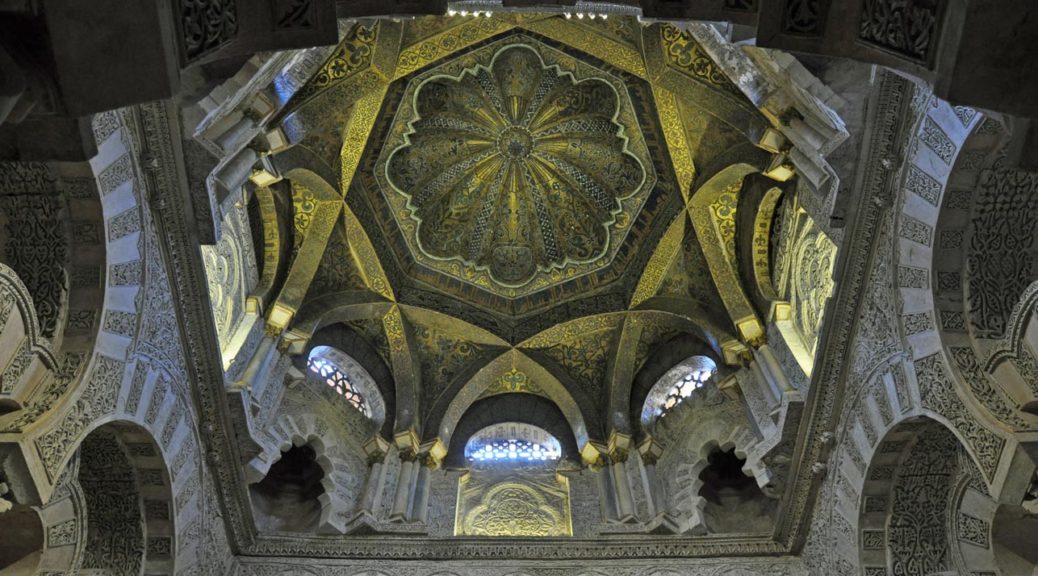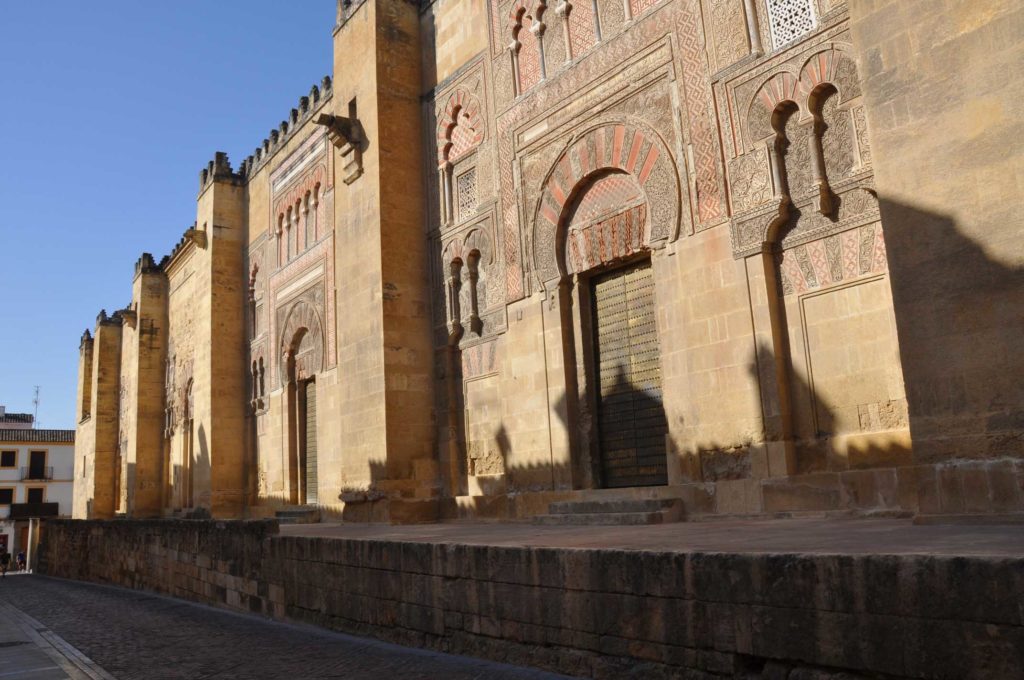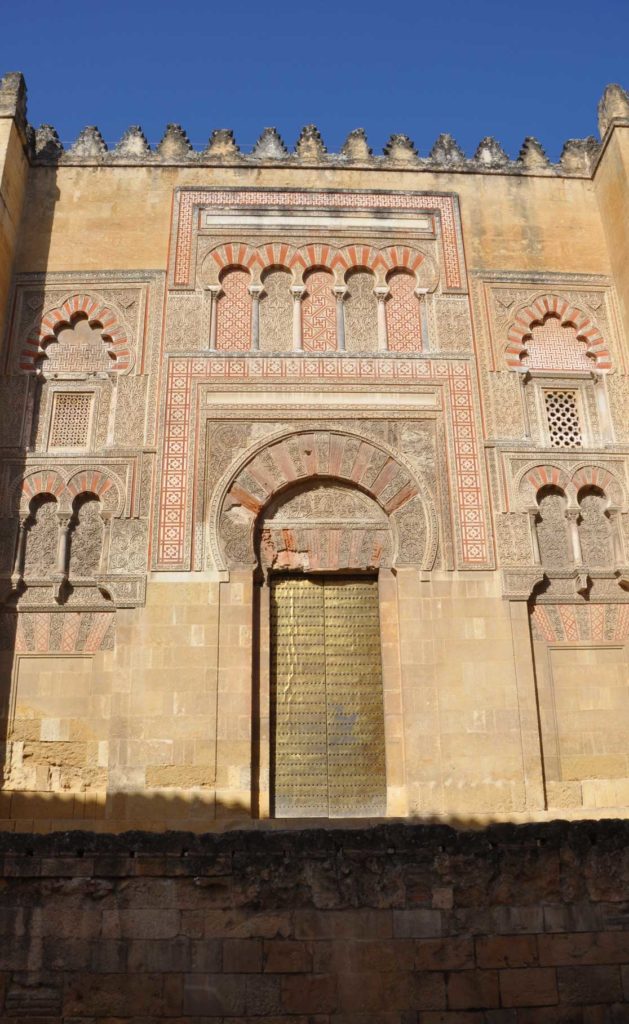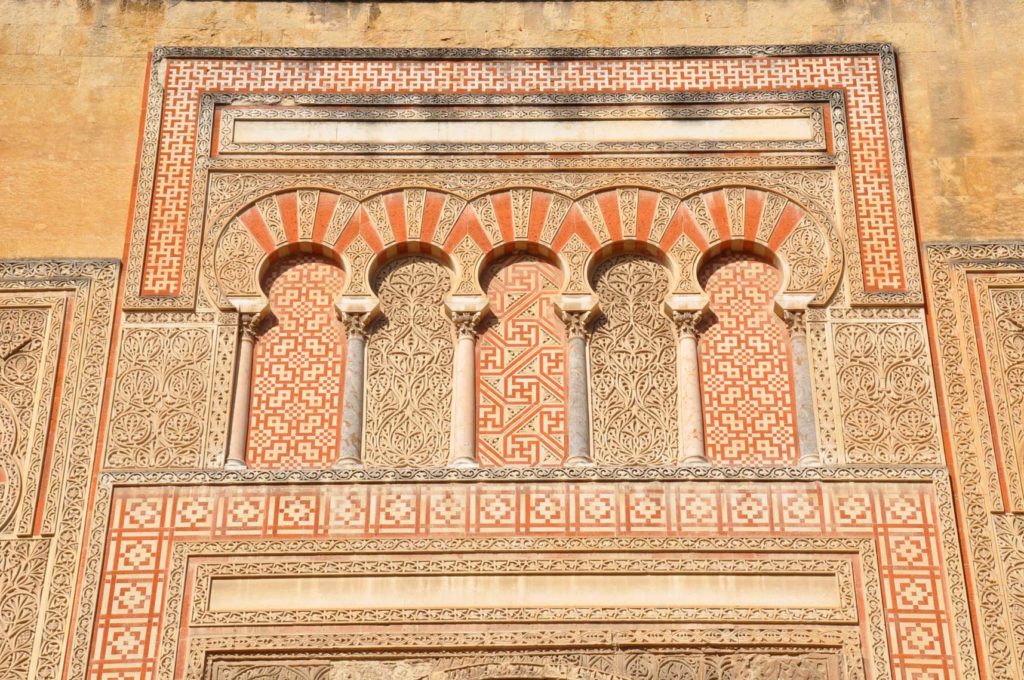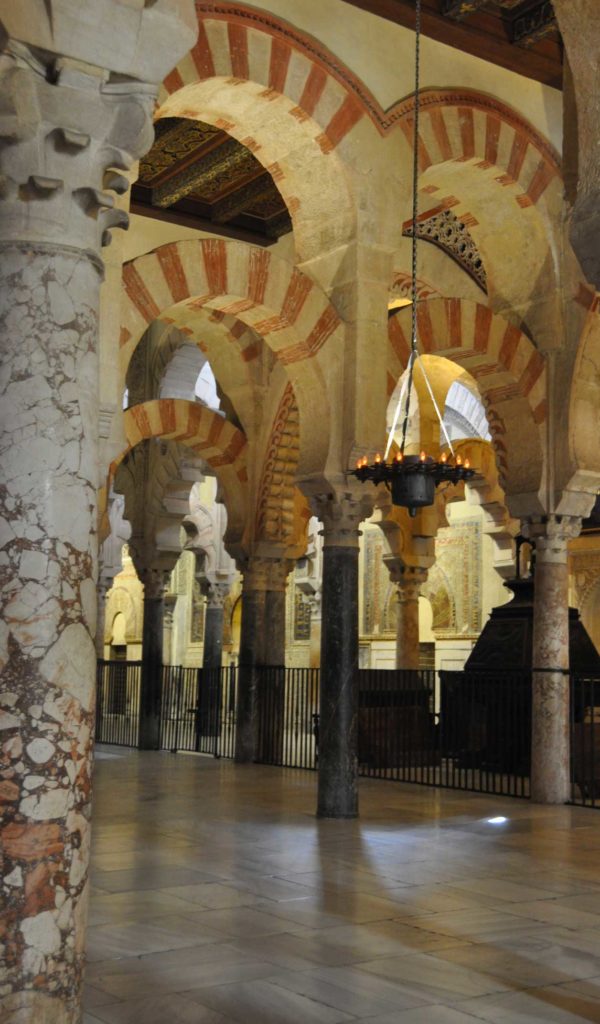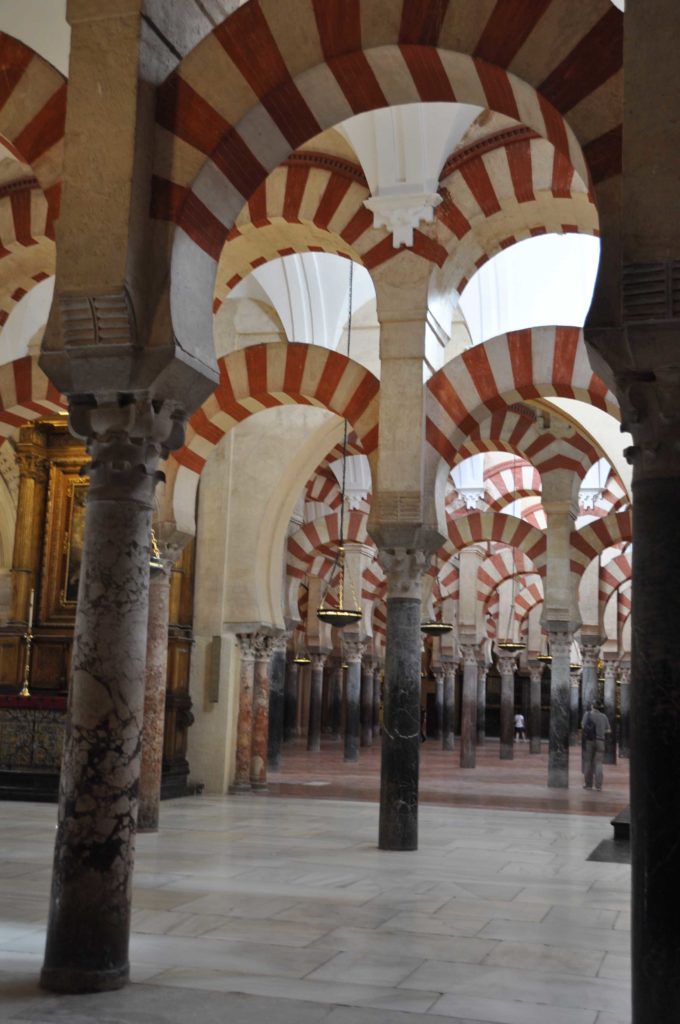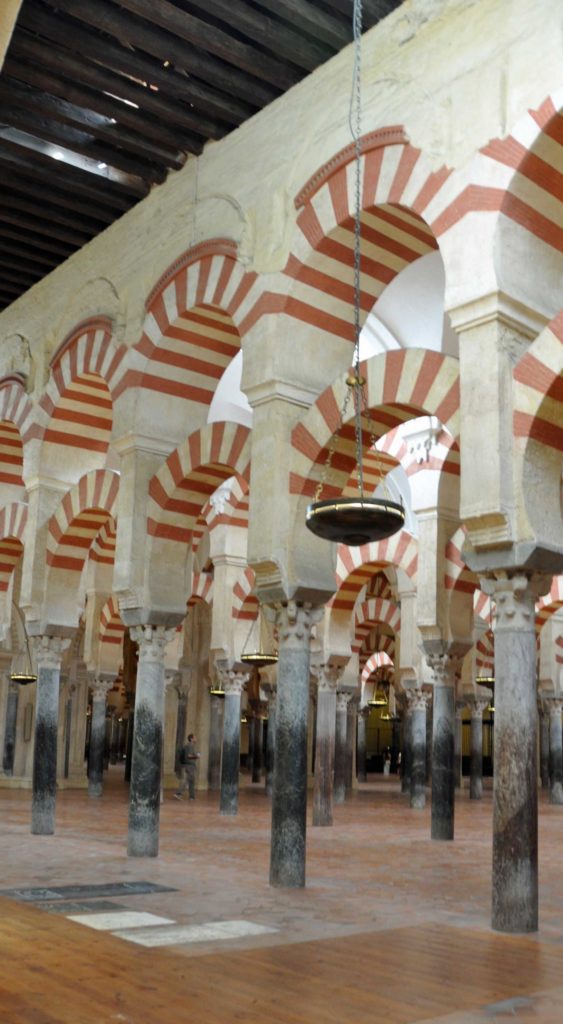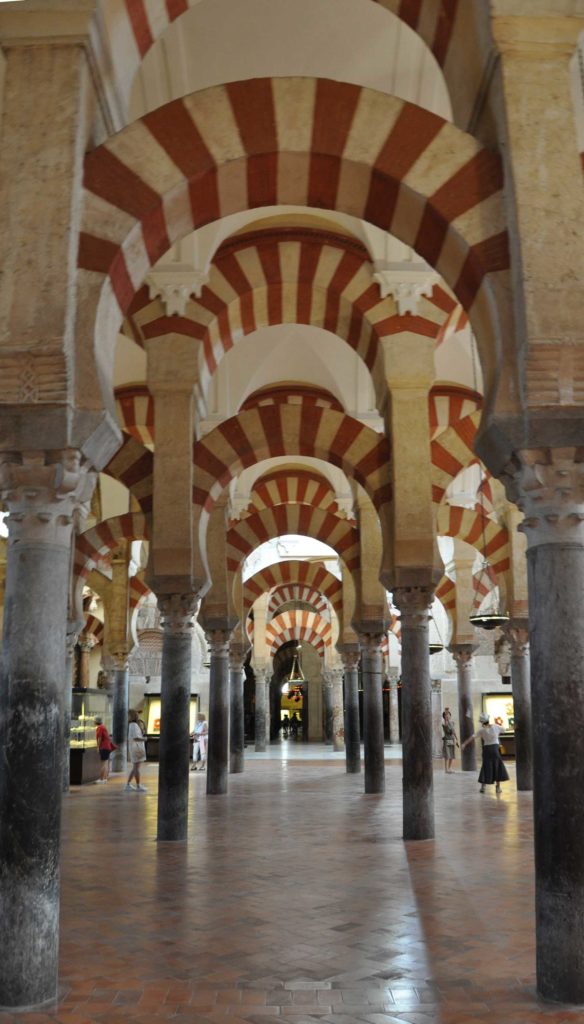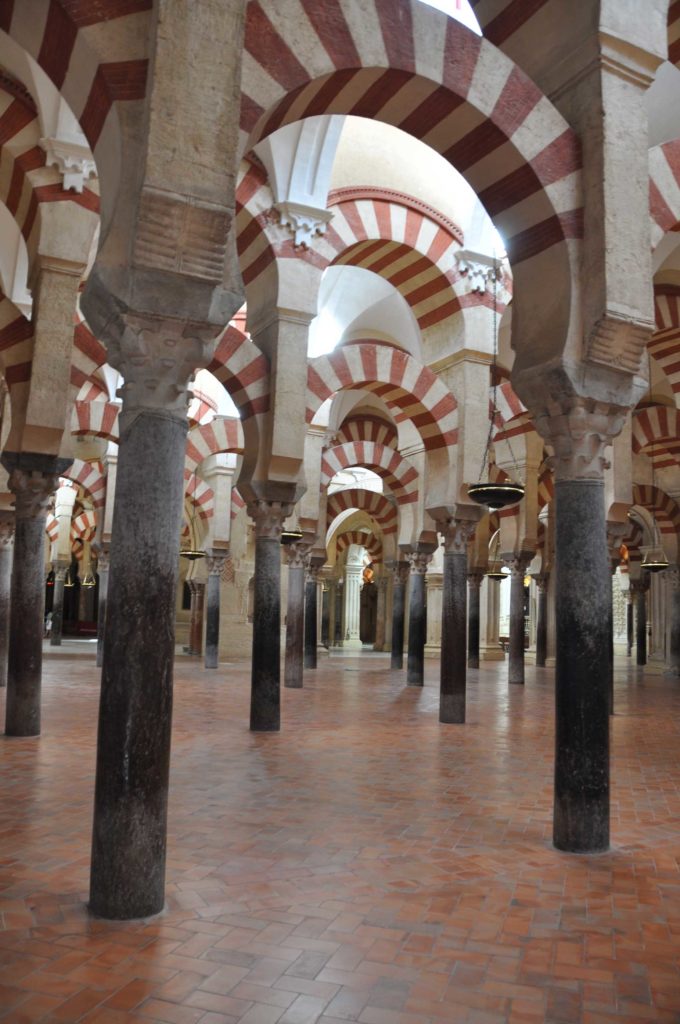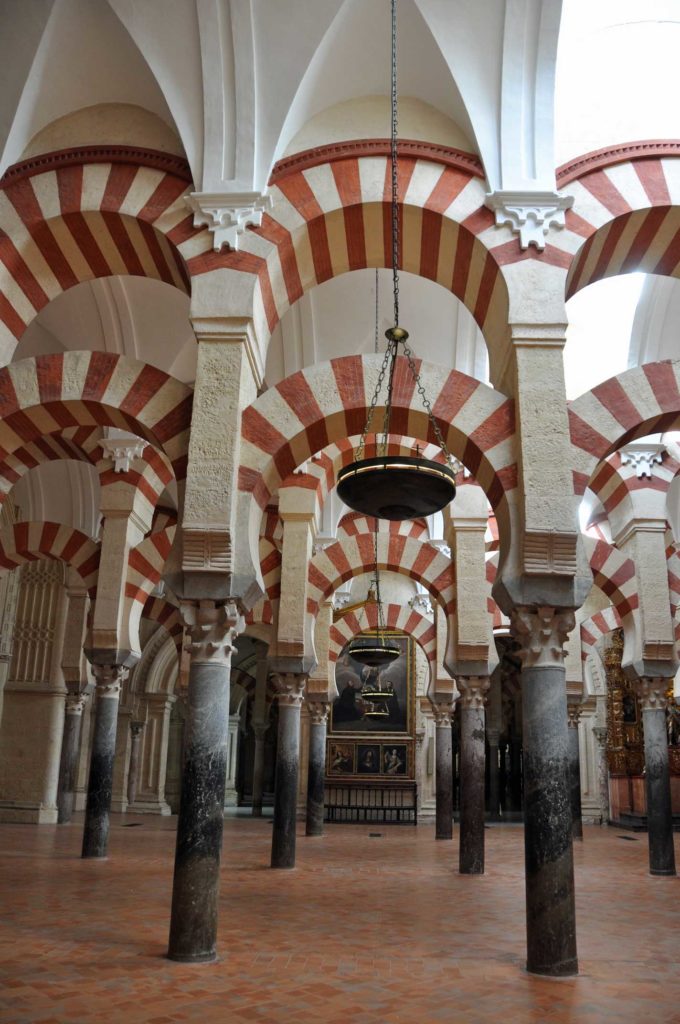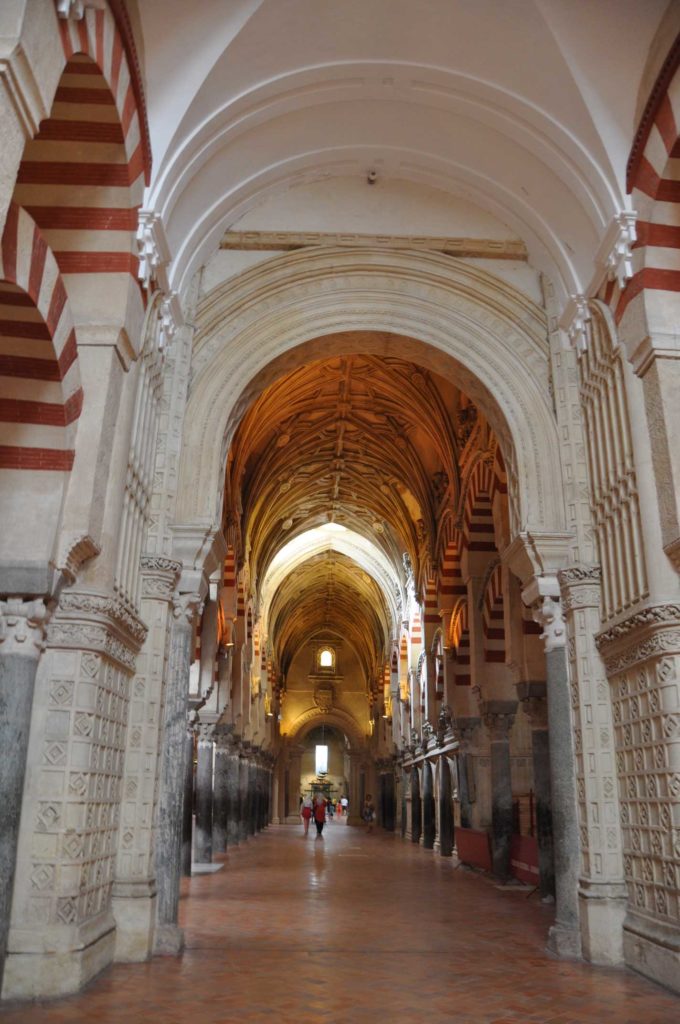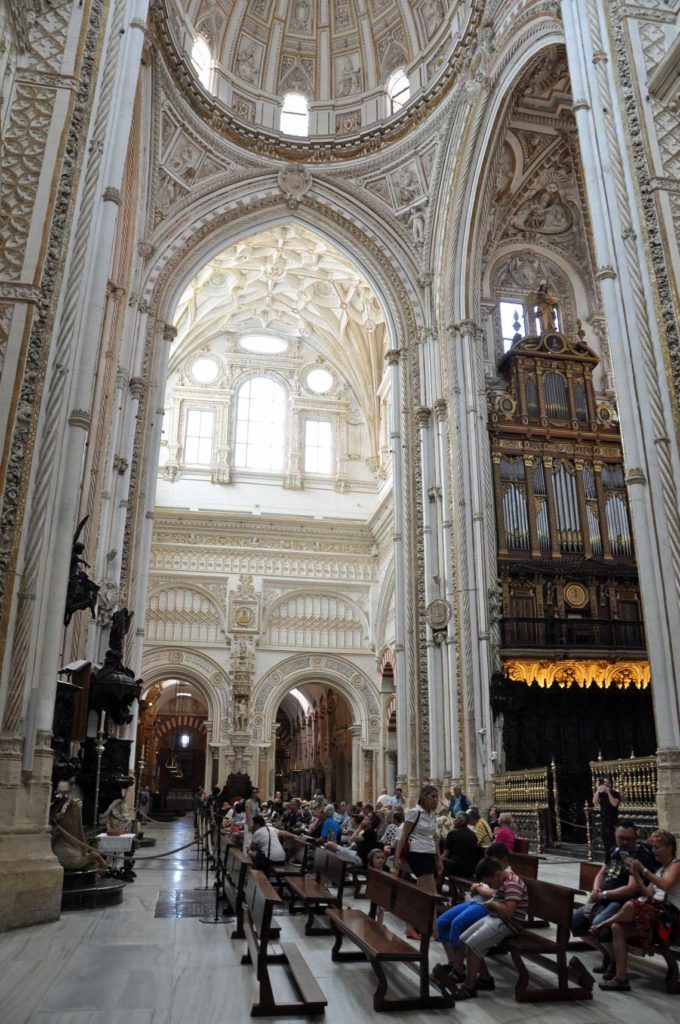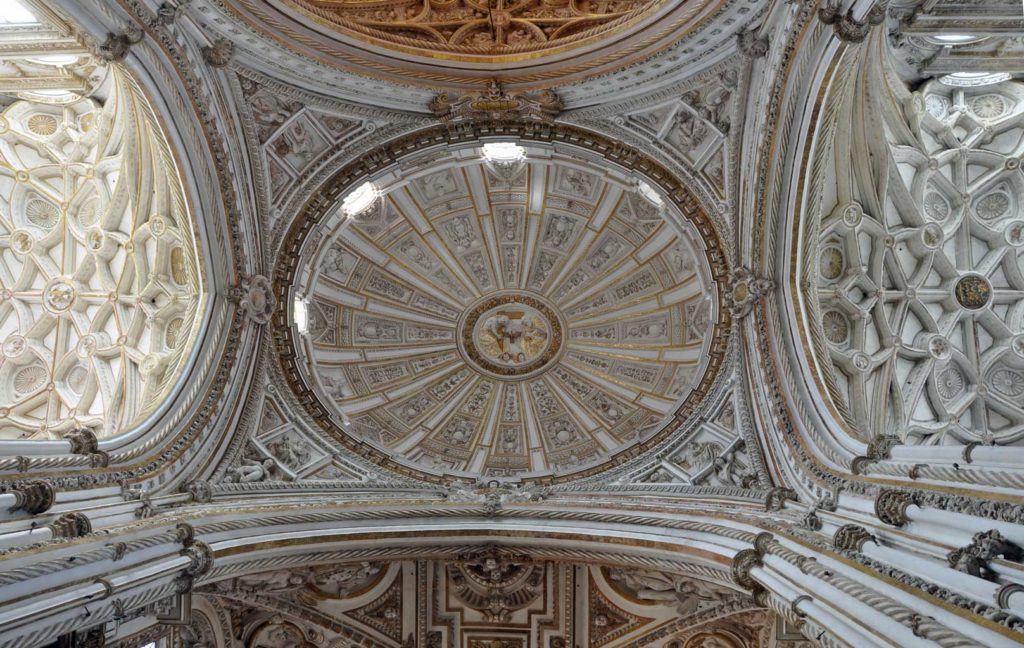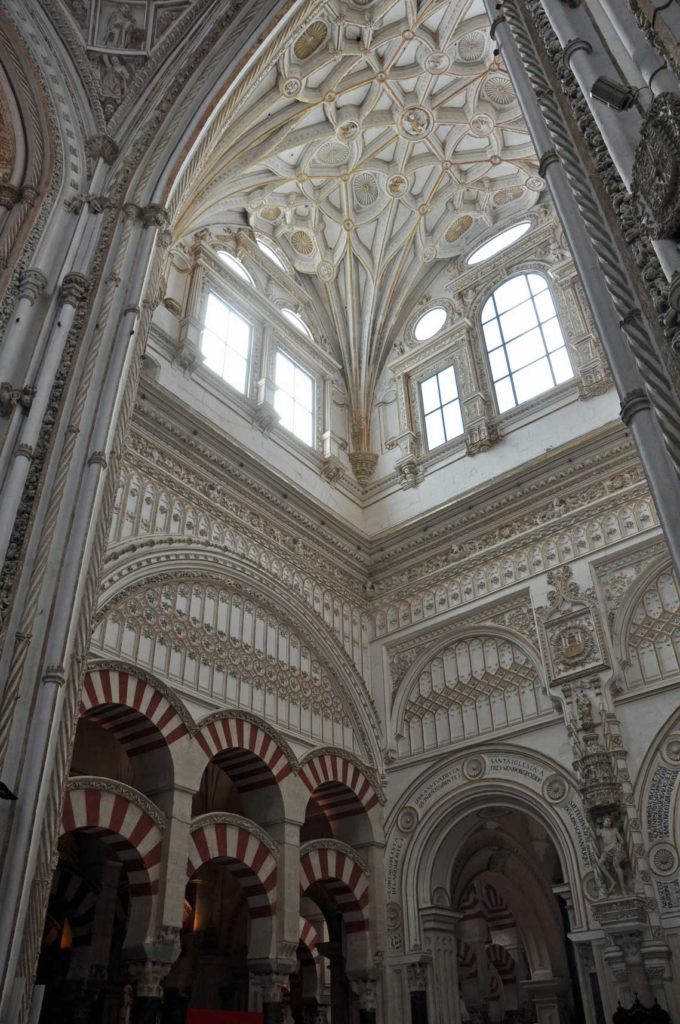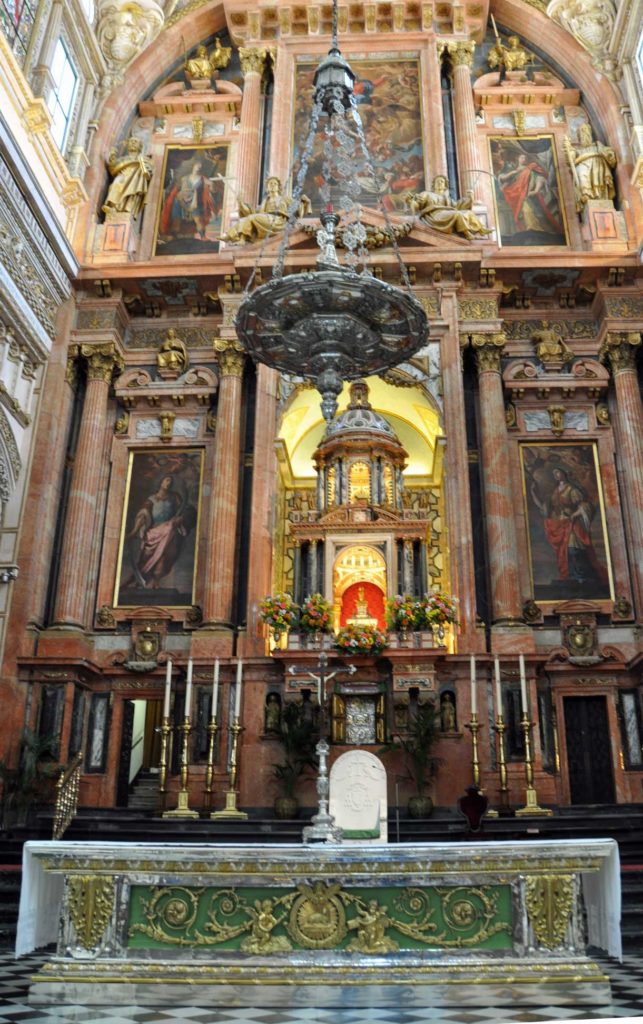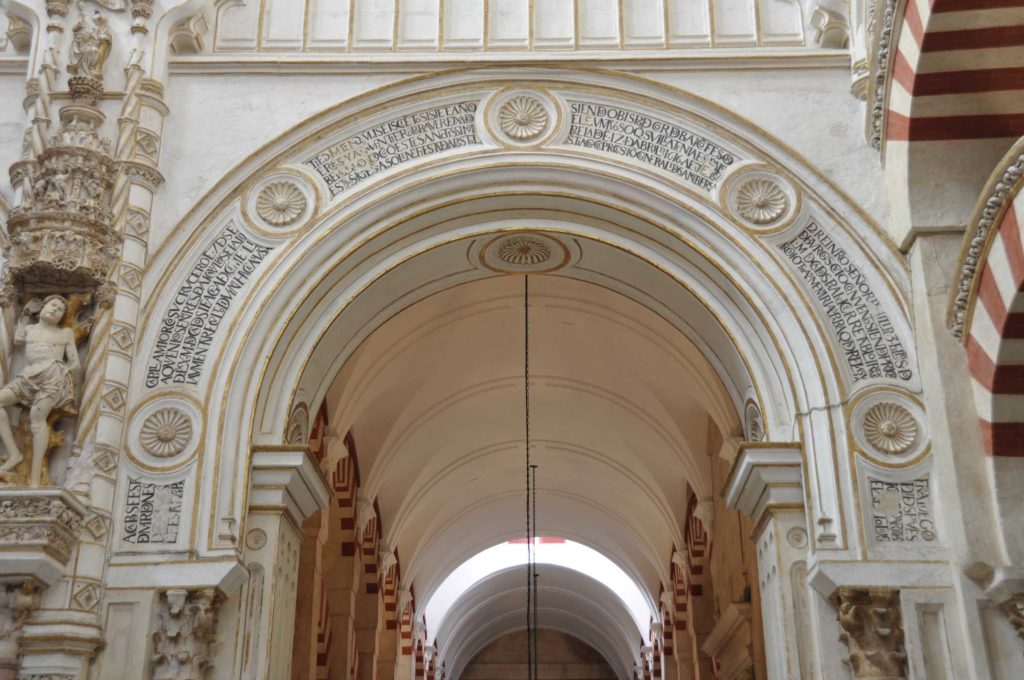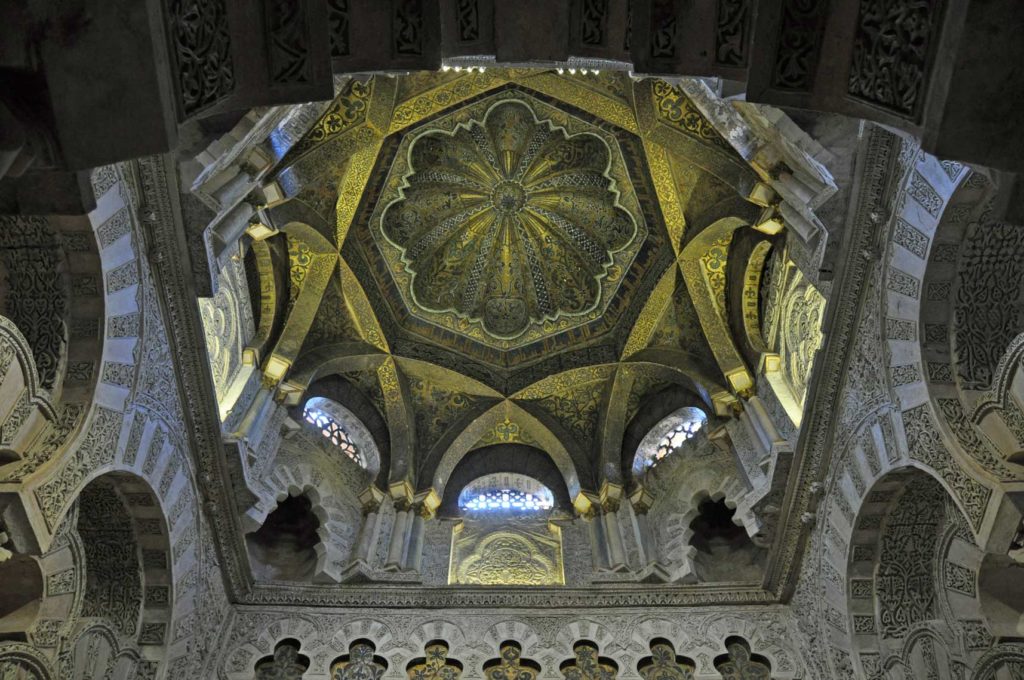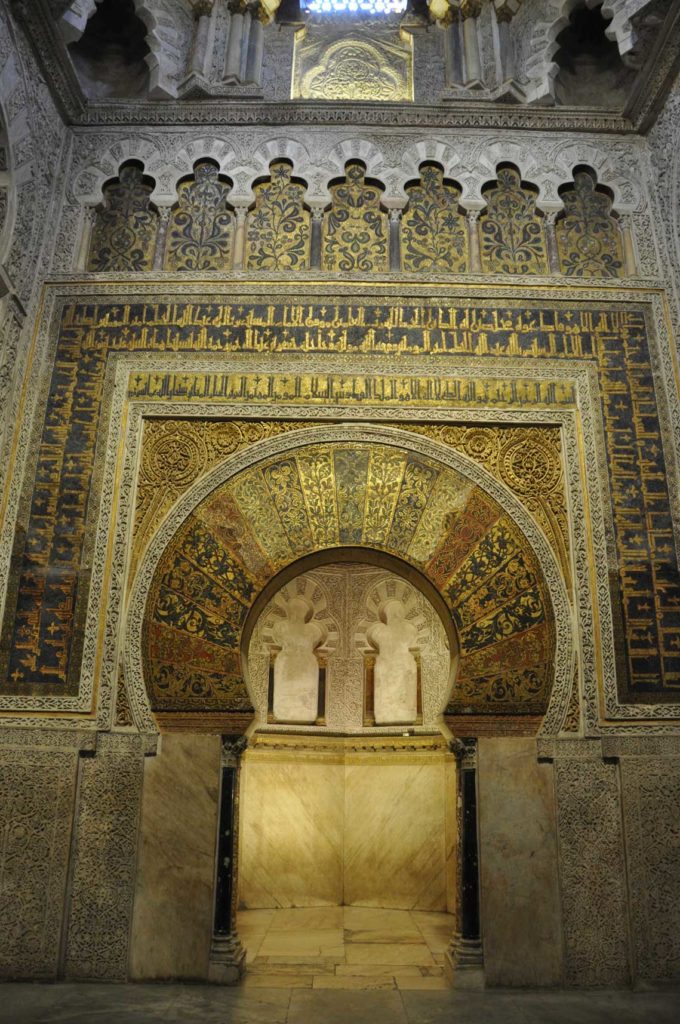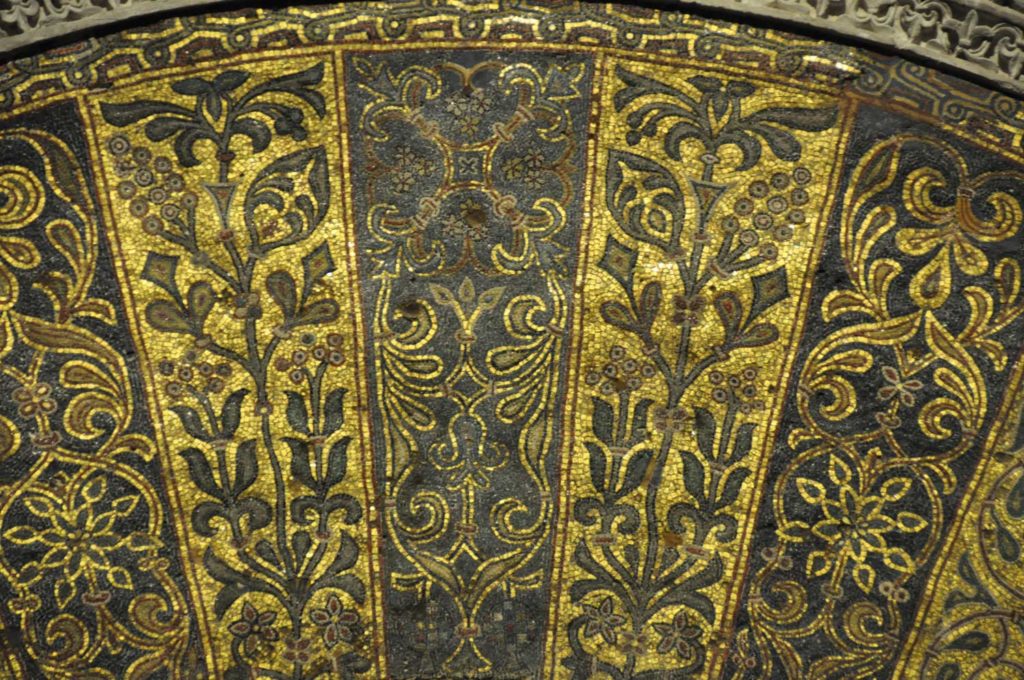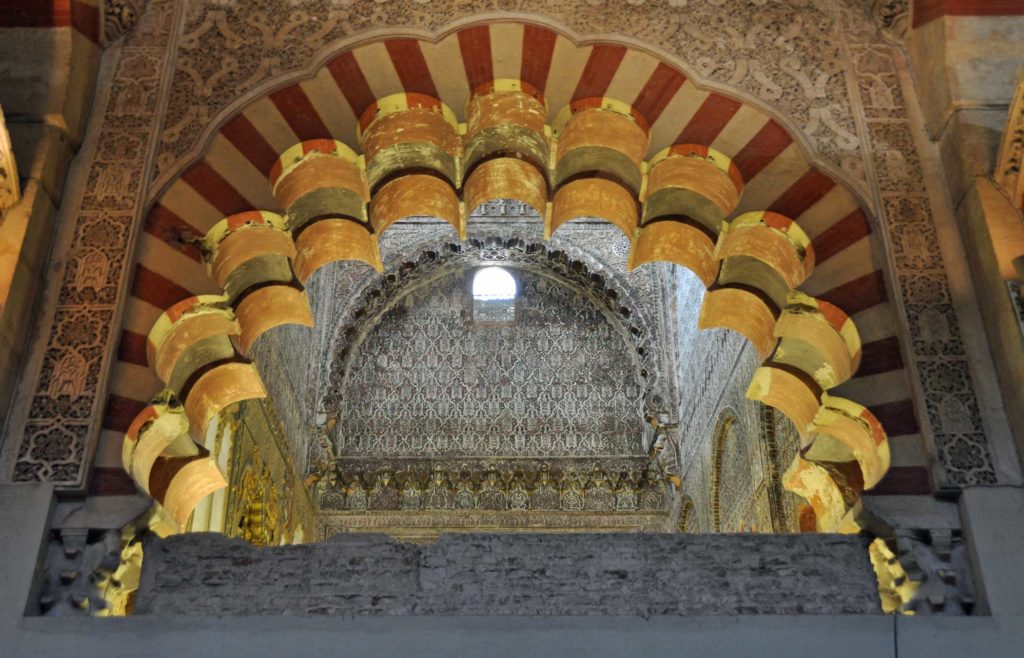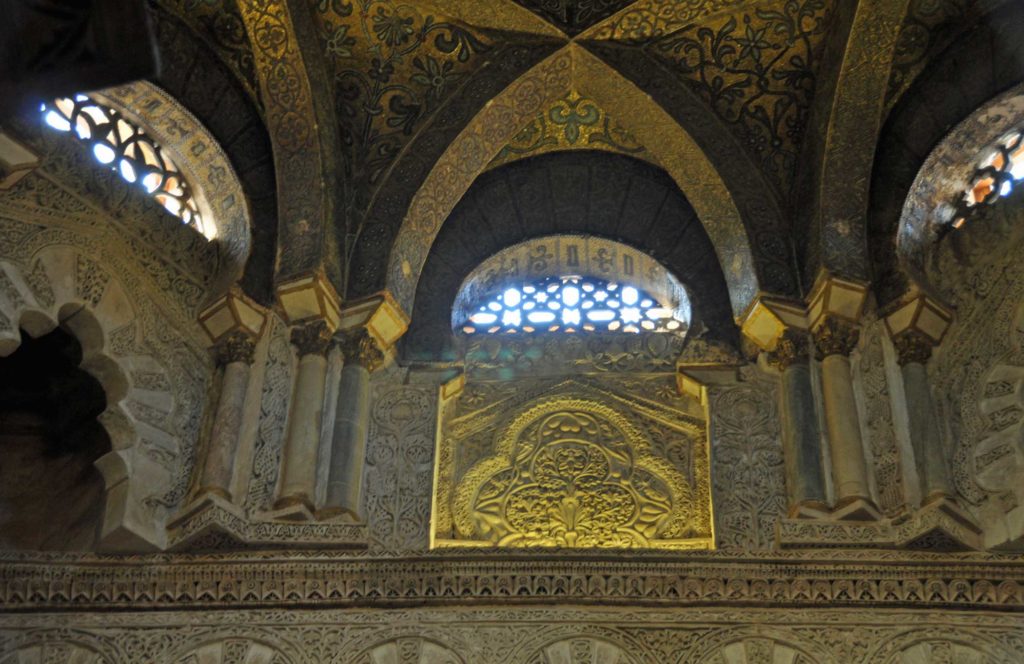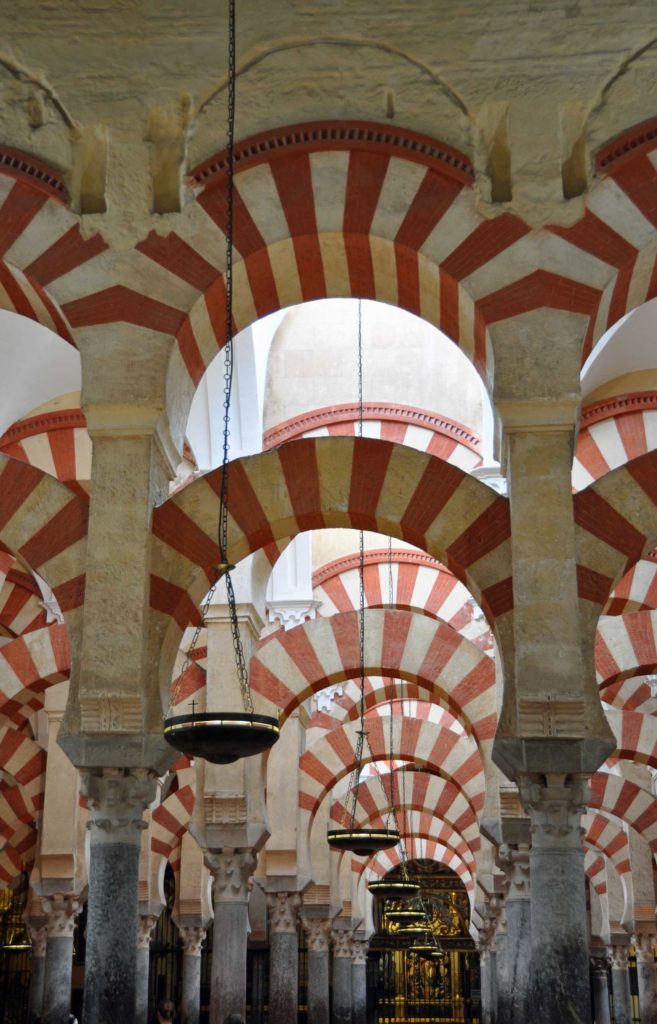The reason for visiting Cordoba is simple: the Mesquita, a cathedral built through the remains of one of the most beautiful mosques imaginable.
The construction of the Mosque began in 786 A.D. and enlargements were carried out by four different Umayyad Rulers.
The building is roughly rectangular, divided into a courtyard, also known as the Orange Courtyard, the old minaret, which was transformed into the bellfry tower of the Cathedral in the 17th century, and the prayer hall
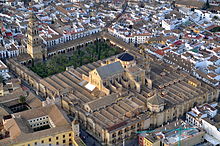
The prayer hall is made up of more than 800 marble, jasper and granite columns, which supported around 400 horseshoe arches with arch-stones in two colours.
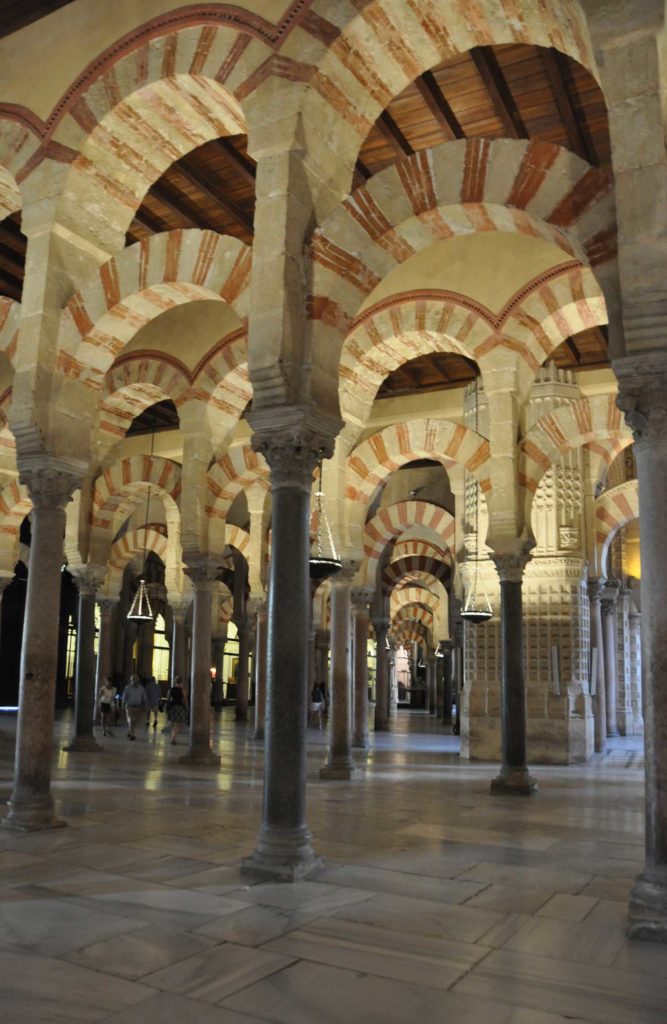
Above them, the mihrab impressed with all its splendour. It was built using marble, featuring stuccos and beautifully coloured Byzantine mosaics, contrasting with the gold background.
After the Christian conquest, the mosque continued little changed for around 500 years until the local bishop persuaded the Spanish king to allow it’s conversion into a more standard cathedral building.
You approach the mesquite through small white streets, skirting the walls to maximise the shade in the Summer. Originally the arches to the building would have been open to the city, allowing the breezes to cool down the interior and obviously allowing in much more light.
The bell tower at one end of the courtyard would have called the faithful to prayer, originally through the voice of the muezzin and now to the sound of bells.
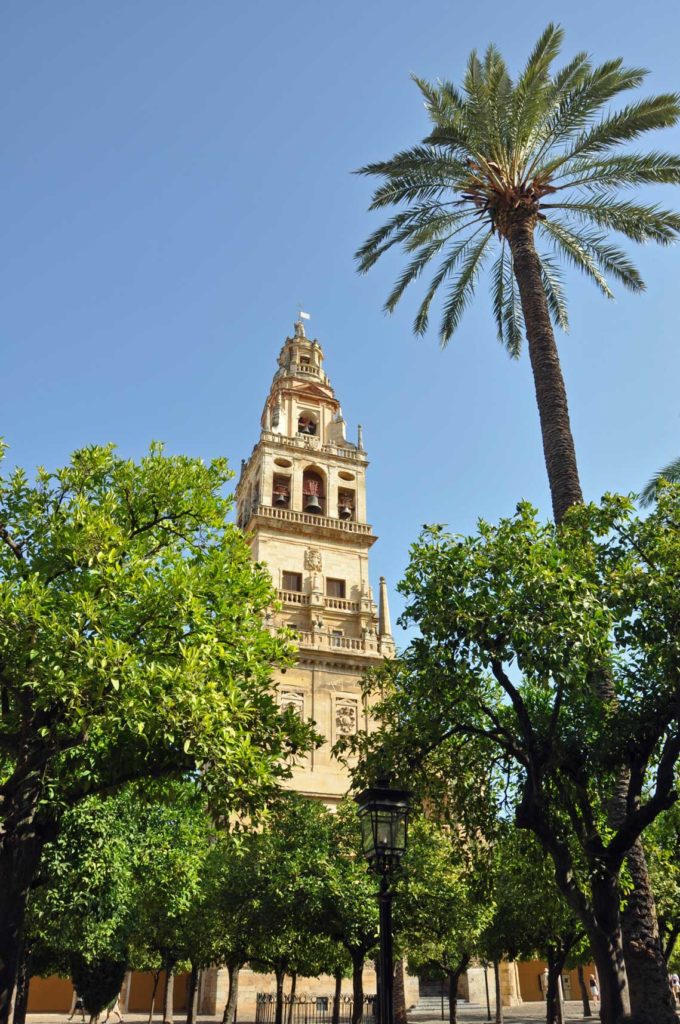
The courtyard is a very beautiful space, marked out from the centre of town as restful with no shops or hawkers to disturb the peace.
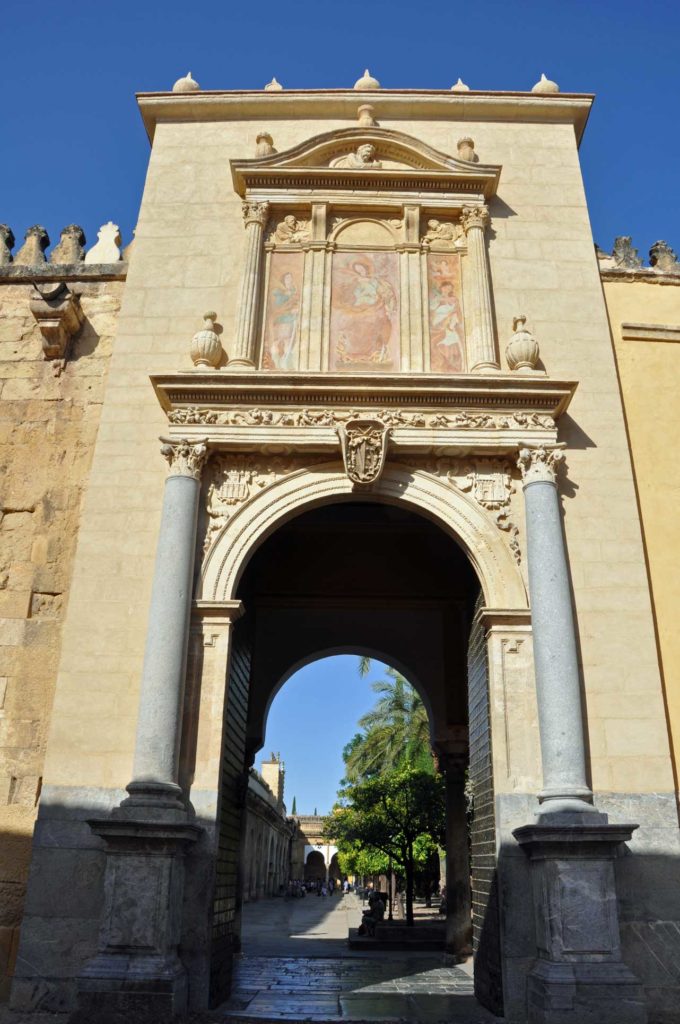

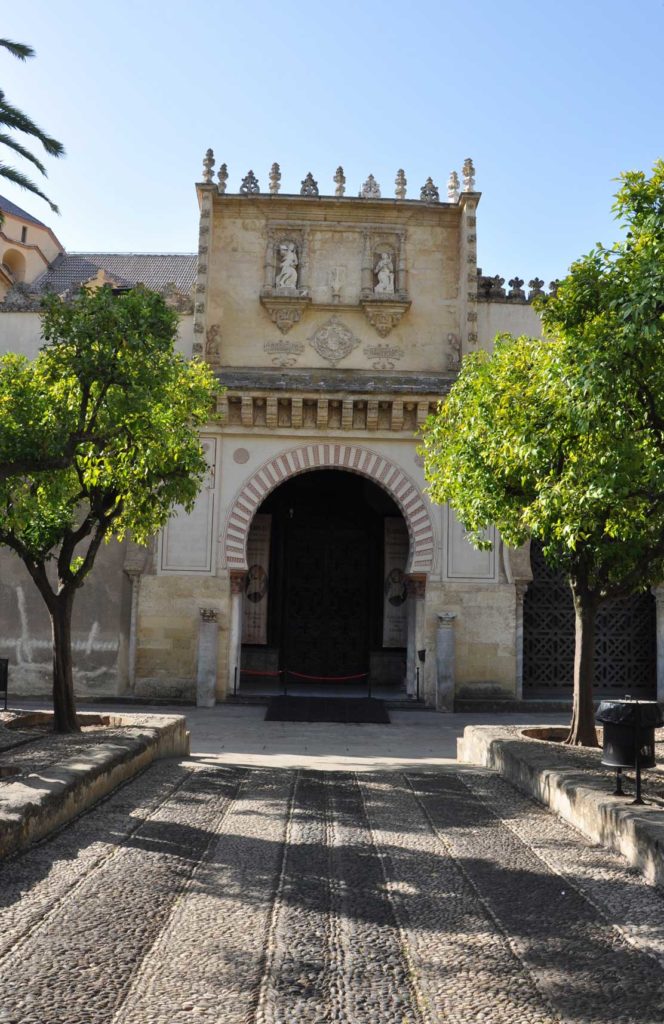
We entered into darkness, with crowds as always centred on the doors in and out, but as we moved through the building the crowds fell away very quickly.
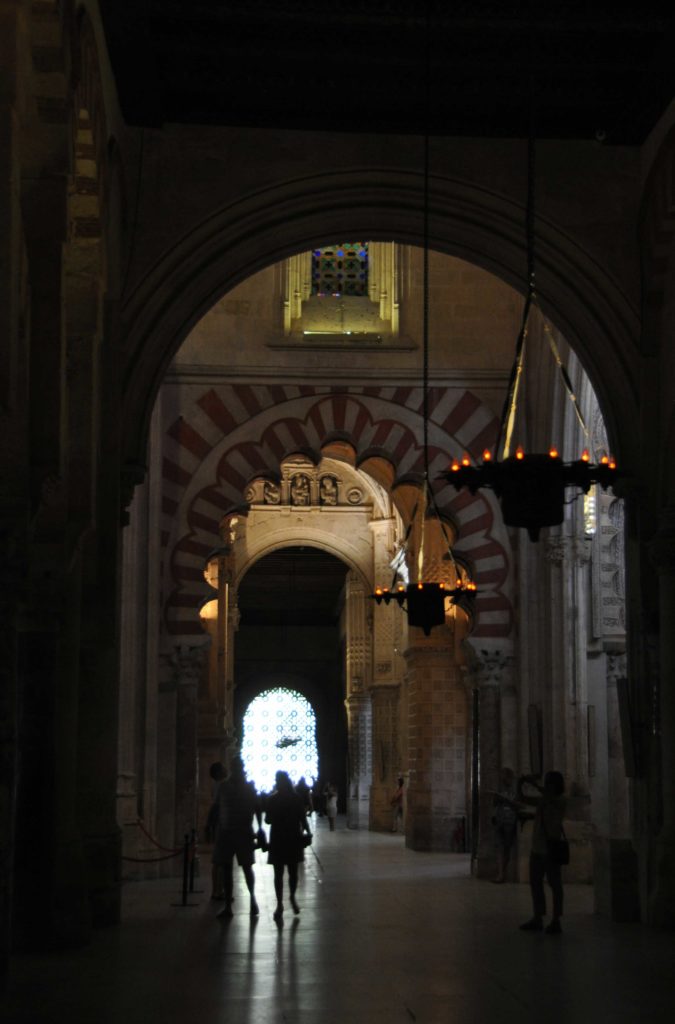
The columns really do give the impression of palm trees, of walking through a very plain stone forest.
And slap bang in the middle of the still beauty, you find plonked down a cathedral, feeling entirely out of place.
